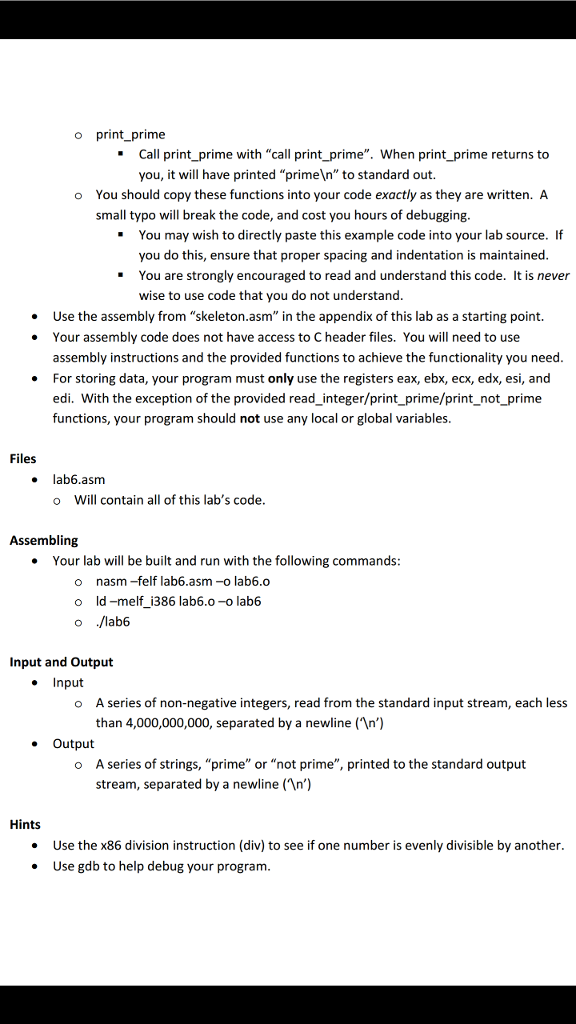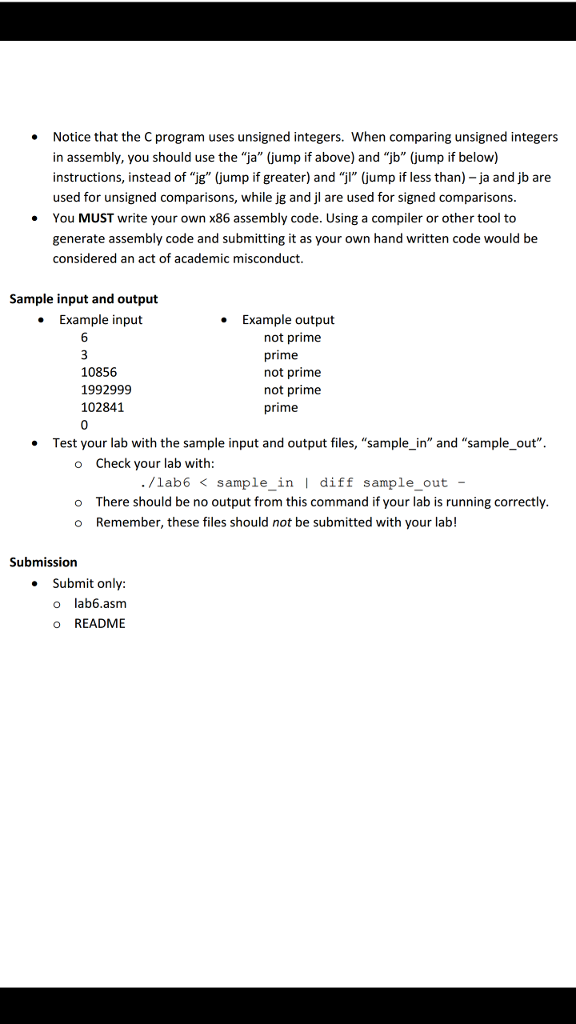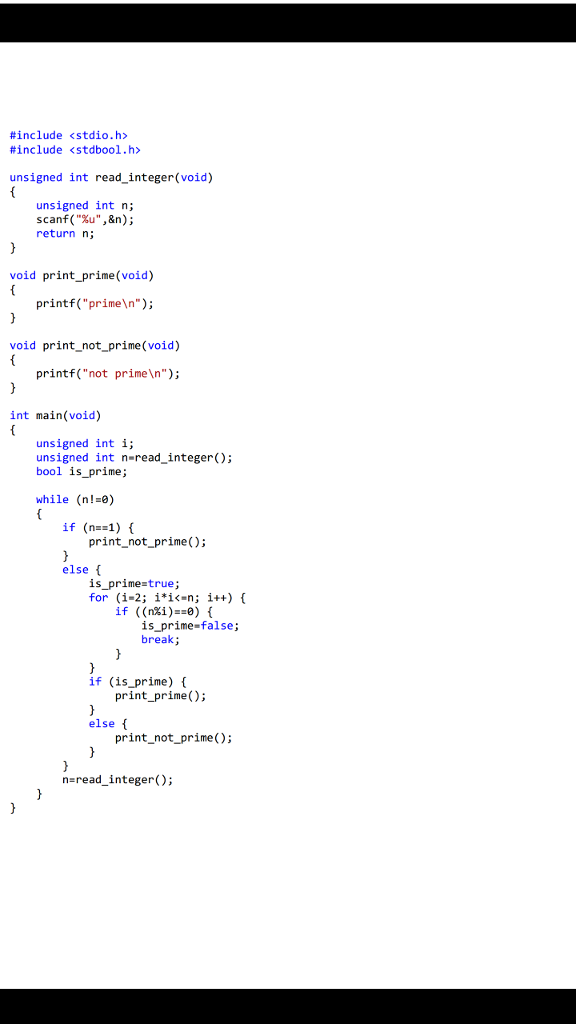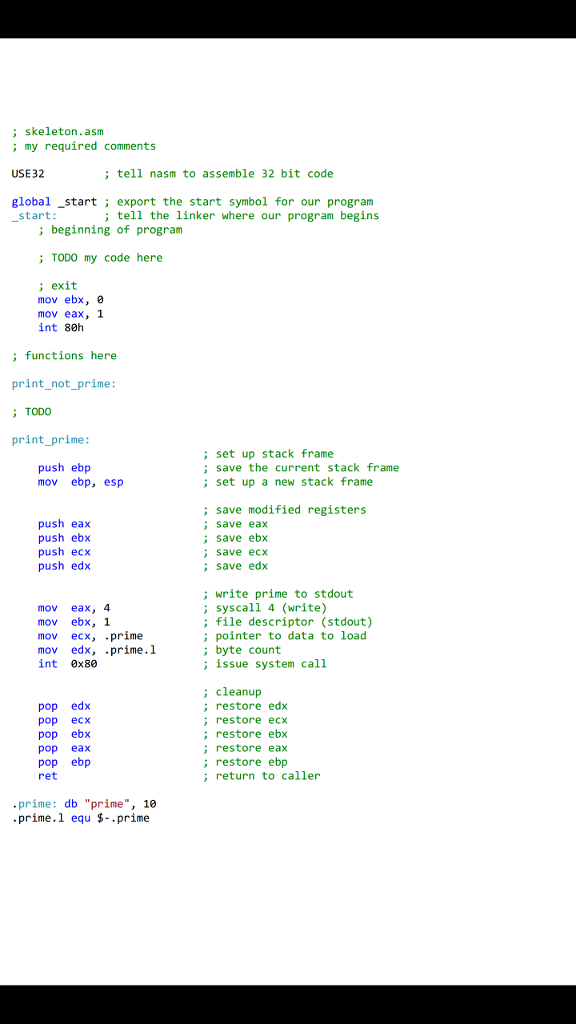Question
C code example: #include #include unsigned int read_integer(void) { unsigned int n; scanf(%u, & n); return n; } void print_prime(void) { printf(prime ); } void






C code example:
#include Assembly skeleton to be used: ; skeleton.asm ; my required comments USE32 ; tell nasm to assemble 32 bit code global _start ; export the start symbol for our program _start: ; tell the linker where our program begins ; beginning of program ; TODO my code here ; exit mov ebx, 0 mov eax, 1 int 80h ; functions here print_not_prime: ; TODO print_prime: ; set up stack frame push ebp ; save the current stack frame mov ebp, esp ; set up a new stack frame ; save modified registers push eax ; save eax push ebx ; save ebx push ecx ; save ecx push edx ; save edx ; write prime to stdout mov eax, 4 ; syscall 4 (write) mov ebx, 1 ; file descriptor (stdout) mov ecx, .prime ; pointer to data to load mov edx, .prime.l ; byte count int 0x80 ; issue system call ; cleanup pop edx ; restore edx pop ecx ; restore ecx pop ebx ; restore ebx pop eax ; restore eax pop ebp ; restore ebp ret ; return to caller .prime: db "prime", 10 .prime.l equ $-.prime read_integer: ; set up stack frame push ebp ; save the current stack frame mov ebp, esp ; set up a new stack frame ; set up local variables sub esp, 8 ; allocate space for two local ints mov dword [ebp-4], '0' ; digit: initialize to '0' mov dword [ebp-8], 0 ; value: initialize to 0 ; save modified registers push ebx ; save ebx push ecx ; save ecx push edx ; save edx .read_loop: ; update number calculation mov eax, 10 ; load multiplier mul dword [ebp-8] ; multiply current value by 10, store in eax add eax, [ebp-4] ; add new digit to current value sub eax, '0' ; convert digit character to numerical equivalent mov [ebp-8], eax ; save new value ; read in digit from user mov eax, 3 ; syscall 3 (read) mov ebx, 0 ; file descriptor (stdin) lea ecx, [ebp-4] ; pointer to data to save to mov edx, 1 ; byte count int 0x80 ; issue system call ; loop until enter is pressed cmp dword [ebp-4], 10 ; check if end of line reached jne .read_loop ; if not, continue reading digits ; cleanup mov eax, [ebp-8] ; save final value in eax pop edx ; restore edx pop ecx ; restore ecx pop ebx ; restore ebx add esp, 8 ; free local variables pop ebp ; restore ebp ret ; return to caller
Step by Step Solution
There are 3 Steps involved in it
Step: 1

Get Instant Access to Expert-Tailored Solutions
See step-by-step solutions with expert insights and AI powered tools for academic success
Step: 2

Step: 3

Ace Your Homework with AI
Get the answers you need in no time with our AI-driven, step-by-step assistance
Get Started


